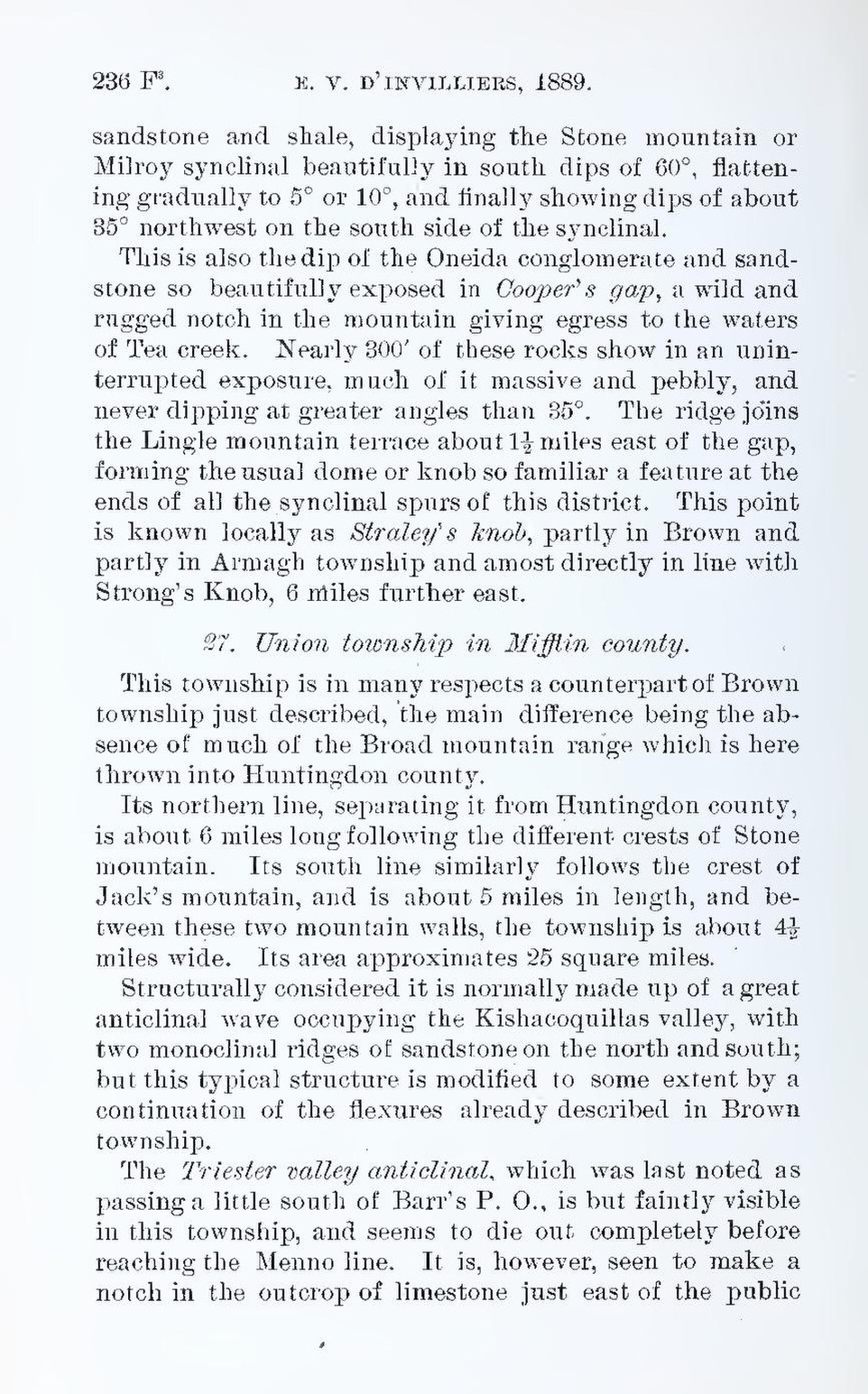sandstone and shale, displaying the Stone mountain or Milroy synclinal beautifully in south dips of 60°, flatten- ing gradually to 5° or 10°, and finally showing dips of about 35° northwest on the south side of the synclinal.
This is also the dip of the Oneida conglomerate and sandstone so beautifully exposed in Cooper's gap, a wild and rugged notch in the mountain giving egress to the waters of Tea creek. Nearly 300′ of these rocks show in an uninterrupted exposure, much of it massive and pebbly, and never dipping at greater angles than 35°. The ridge joins the Lingle mountain terrace about 1½ miles east of the gap, forming the usual dome or knob so familiar a feature at the ends of all the synclinal spurs of this district. This point is known locally as Straley’s knob, partly in Brown and partly in Armagh township and amost directly in line with Strong’s Knob, 6 miles further east.
27. Union township in Mifflin county.
This township is in many respects a counterpart of Brown township just described, the main difference being the absence of much of the Broad mountain range which is here thrown into Huntingdon county.
Its northern line, separating it from Huntingdon county, is about 6 miles long following the different crests of Stone mountain. Its south line similarly follows the crest of Jack’s mountain, and is about 5 miles in length, and between these two mountain walls, the township is about 4½ miles wide. Its area approximates 25 square miles.
Structurally considered it is normally made up of a great anticlinal wave occupying the Kishacoquillas valley, with two monoclinal ridges of sandstone on the north and south; but this typical structure is modified to some extent by a continuation of the flexures already described in Brown township.
The Triester valley anticlinal, which was last noted as passing a little south of Barr’s P. O., is but faintly visible in this township, and seems to die out completely before reaching the Menno line. It is, however, seen to make a notch in the outcrop of limestone just east of the public
